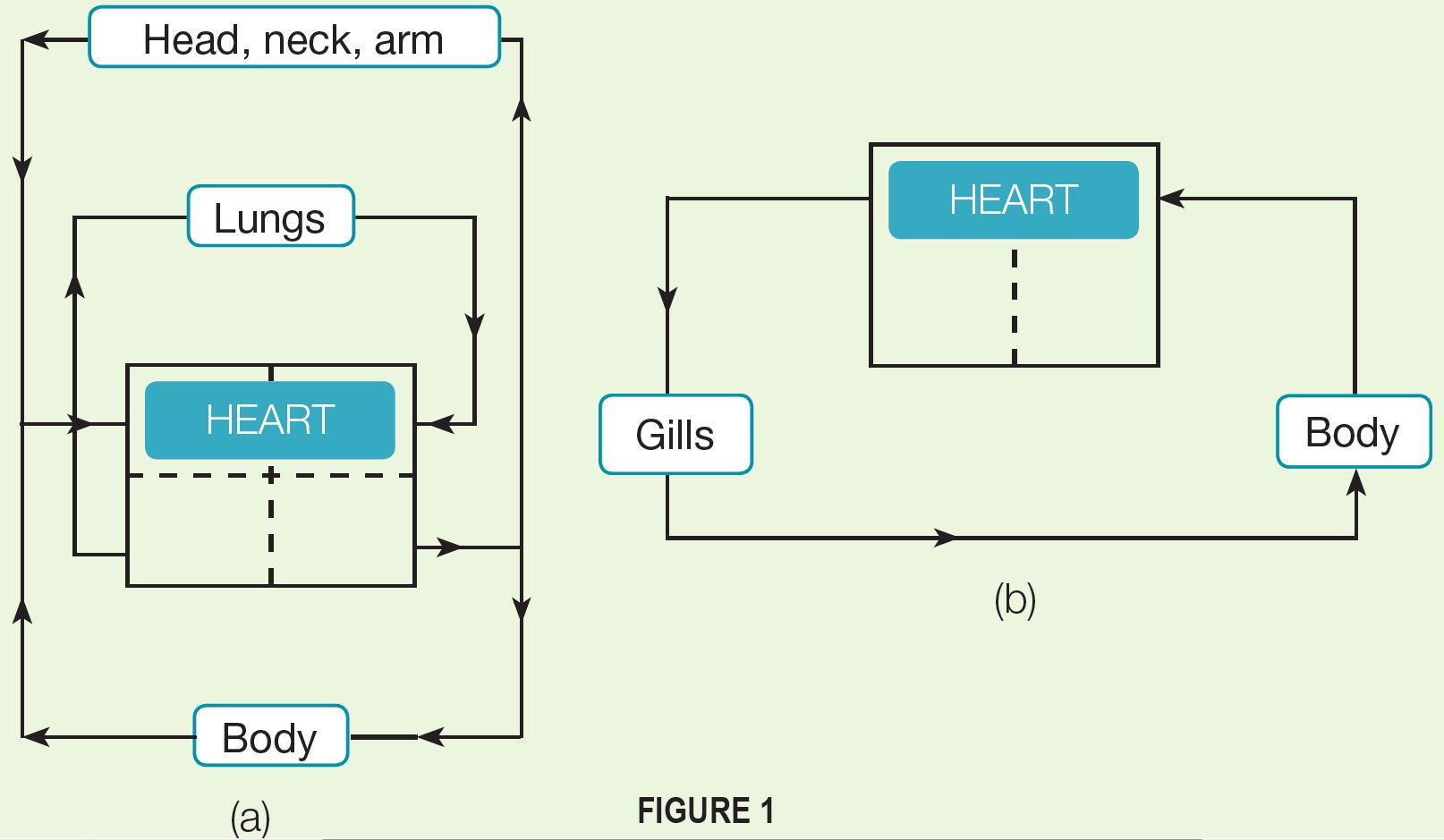One of the lymphatic vessels of an individual is clogged.
(a) Explain the effects on the lymphatic system of the individual.
(b) Explain what will happen if the lymphatic vessel in the leg is clogged?
Answer:
(a) Tissue fluid accumulates in the blocked vessels and cannot be returned to the blood circulatory system. The individual will suffer from oedema.
(b) Foot will swell
Figure 1(a) shows a schematic of the blood circulatory system in humans and Figure 1(b) shows the schematic of the blood circulatory system in fish.

(a) Explain the blood circulatory system of fish.
(b) Based on Figure 1, compare the human and fish blood circulatory system.
(c) Explain the similarities between the two blood circulatory systems.
(d) Why does the blood flow in fish encounter more obstacles compared to the blood flow in humans and explain how the fish can overcome this problem?
Answer:
(a)
• Deoxygenated blood pumped from the ventricle will enter the gill capillaries.
• Gaseous exchange occurs in the gill capillaries.
• From the gills, oxygenated blood flows back to all the body parts through systemic capillaries.
• Deoxygenated blood transported in the veins will be circulated back to the heart’s atrium.
(b)
The human circulatory system consists of a double circulatory system, whereas fishes have a single circulatory system. The human heart is made up of four chambers while fishes have only two chambers.
(c)
Both are closed circulatory systems because blood is contained in blood vessels when being circulated throughout the body.
(d)
The blood flow in fishes face more obstacles compared to humans because in fishes, the blood needs to be circulated through two capillary systems, that is, gill capillaries and systemic capillaries before returning to the heart. The blood flow through capillaries poses resistance to the flow. Blood hydrostatic pressure against the capillary walls is reduced. This means that the oxygenated blood that leaves the gill capillaries flows at a slow rate.
In humans, blood flows in large vessels, that is, arteries and veins before branching into arterioles and venules and ending with capillaries. The reduction of blood pressure occurs gradually and the flow of blood faces less resistance.
Fishes overcome this resistance by having sinus venosus, a large lumen replacing veins. The larger size of sinus compared to veins impose less resistance to blood flow.